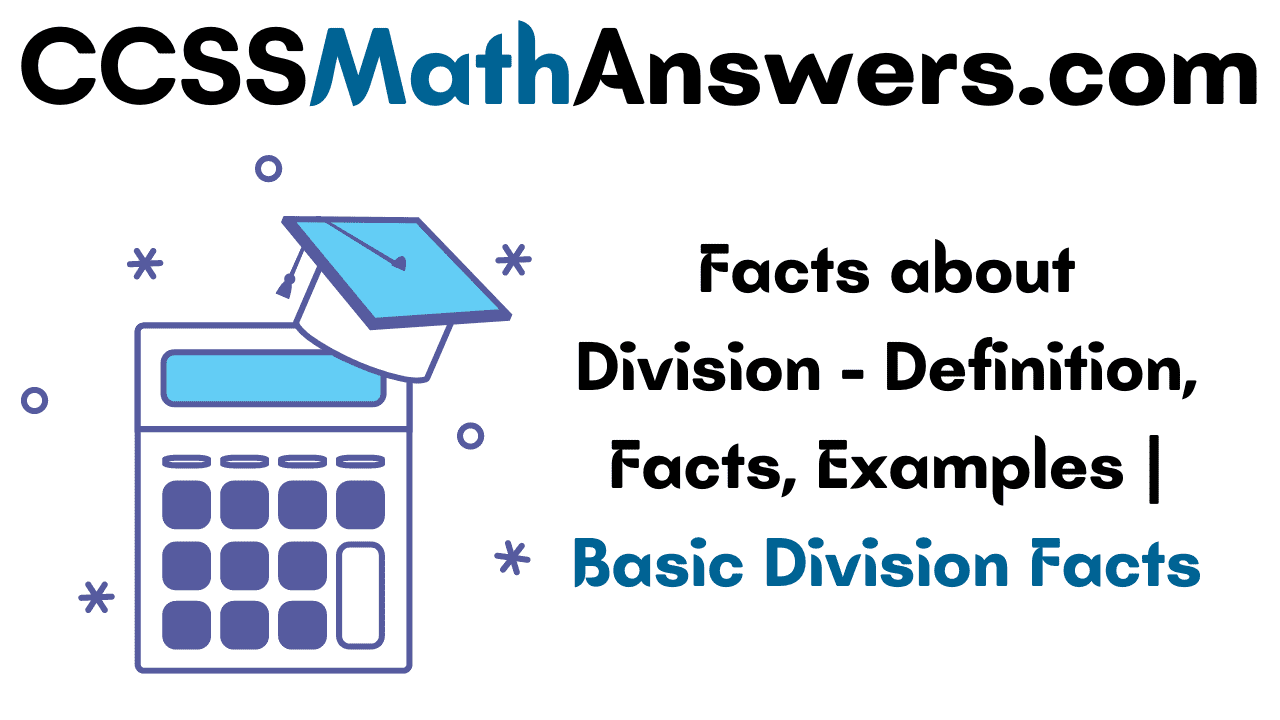Are you confused about division? This article gives you information about division. It also explains the definition of division, the sign of the division, terms like Dividend, Divisor, Quotient, and Remainder, Facts about Division. You can also check the examples for a better understanding of the concept.
Also, refer:
Division – Definition
It is one of the four basic arithmetic operations which gives the result of sharing. In this method, the group of things is distributed into equal parts. There are a lot of signs that people used to indicate division. The most common signs are ‘%’, and back slash’ /’. Some members also write one number up and another number down with a line between them.
In the division Equation, there are Four parts namely 1. Dividend 2. Divisor 3.Quotient,4.Remainder.The dividend is the number you are dividing up. The divisor is the number you are dividing up. The quotient is the answer. The remainder is the part of the dividend that is remained after division. The division is the inverse of Multiplication.
Example: 24%4=6.
24 is the Dividend.
4 is the Divisor.
6 is the Quotient.
Interesting Facts about Division | Division Facts Ideas to Learn
Here we will discuss the facts about division explained by considering few examples. They are along the lines
- When dividing the number by 1, the answer will always be the same number. It means if the divisor is 1, the quotient will always be equal to the dividend such as 50 ÷ 1= 50.
- Division by 0 is undefined. For example 25/0=undefined.
- The division of the same numerator(dividend) and Denominator (divisor) is always 1. For example: 4 ÷ 4 = 1.
- In a division sum, the remainder is always lesser than the divisor. For Example, 16%3 remainder is 1. 1 is smaller than 3.
- The dividend is always equal to the product of the divisor and the quotient with the addition of the remainder. Dividend=(Divisor × Quotient) + RemainderFor example 16%3

(3*5)+1=16
15+1=16
16=16
- The divisor and the quotient are always the factors of the dividend if there is no remainder. For Example 15%3=5
15*5=3
3*5=15
- The dividend is always a multiple of the divisor and the quotient if there is no remainder. For Example 40%8=5 5*8=40, 8*5=40.
FAQs on Facts of Division
1. What is division?
In this method, the group of things is distributed into equal parts.
2. What is the sign of division?
The sign of division is %, backslash( /).
3. What will be the Quotient when the dividend and divisor are the same?
The quotient of the same dividend and divisor is always 1.
4. What will be the Remainder when the dividend and divisor are the same?
The Remainder is zero when the dividend and divisor are the same.
5. In a division, does the remainder is always lesser than the divisor?
In a division, the remainder is less than the divisor. If it is larger than the divisor, it means that the division is incomplete.
6. How to check the division if it is correct or not?
In division, the dividend is always equal to the product of the divisor, quotient with addition to the remainder.
Dividend=(Divisor × Quotient) + Remainder
